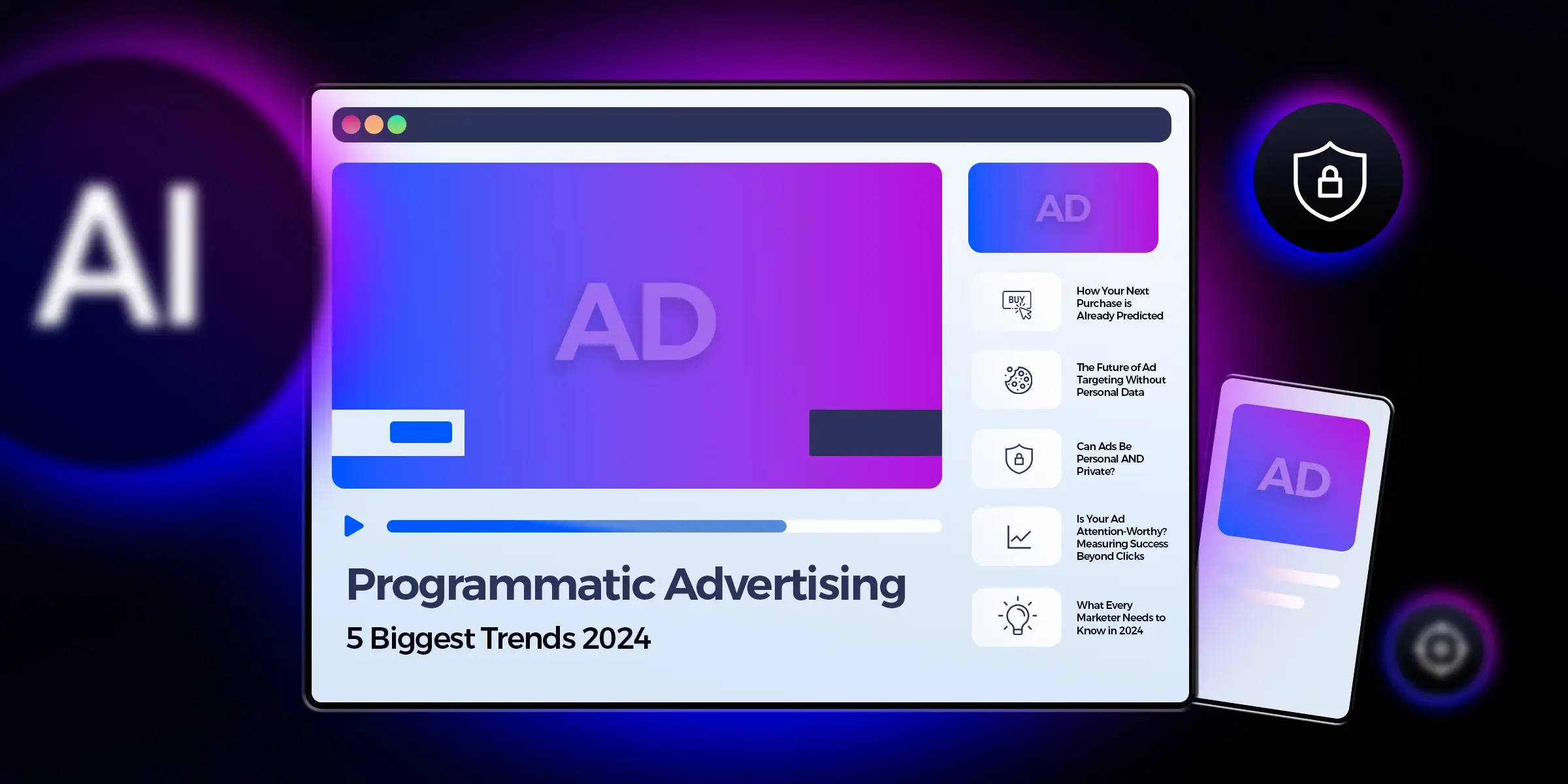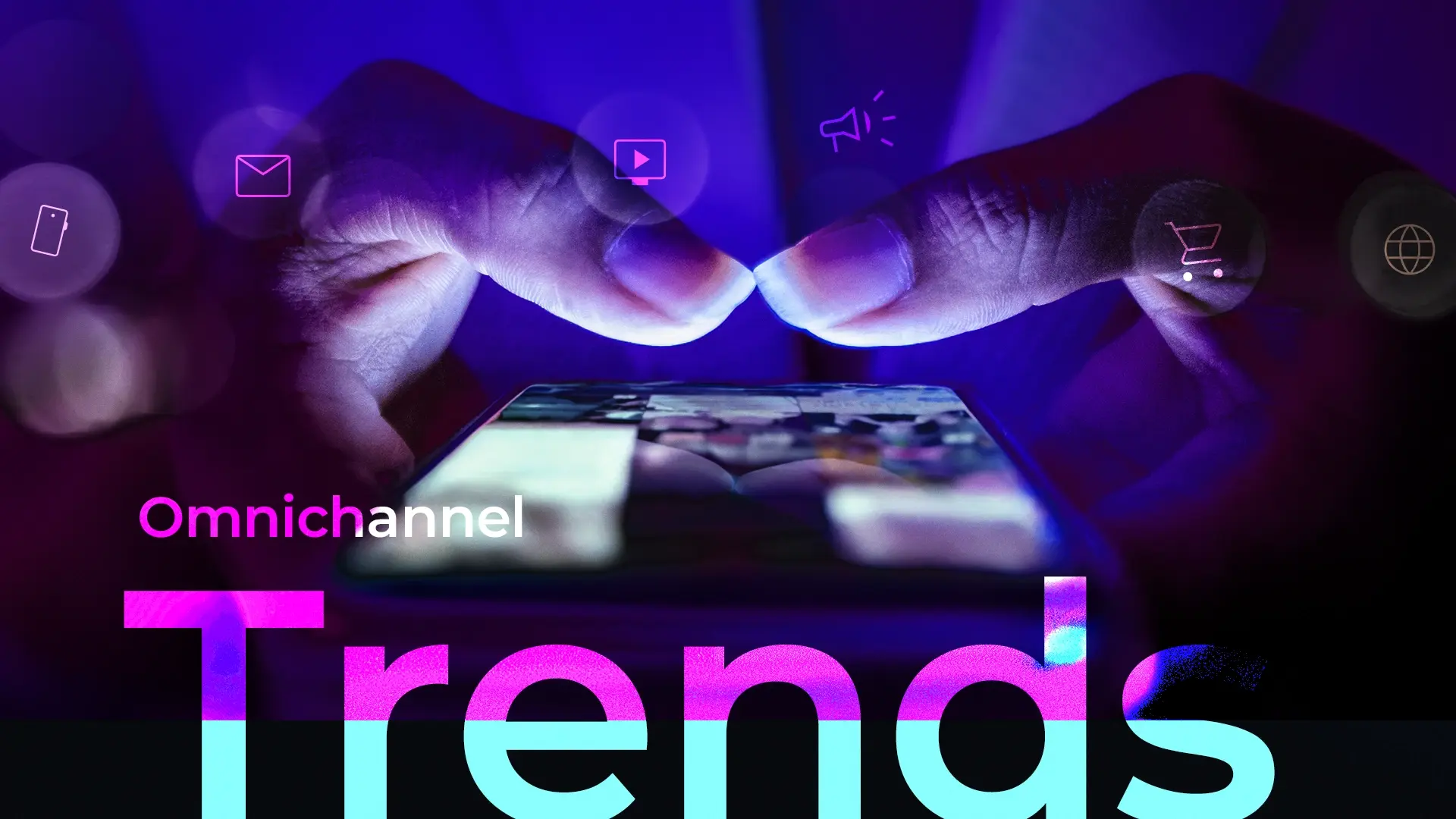Programmatic advertising has been a game-changer in the marketing industry, transforming how businesses reach their target audience. With its precise targeting capabilities and automation, programmatic advertising allows for more effective campaigns and better ROI. Today, it's way beyond the online ads — there’s also connected TV, digital out-of-home, and audio. Year after year, it continues to evolve rapidly, reshaping how brands connect with their audiences online.
But first, what is programmatic advertising?
Put simply, it is the automated process of buying and selling ad space in real-time auctions, targeting potential customers with greater precision. It offers real-time performance data, allowing for flexibility and adjustment based on performance. Compared to traditional display marketing, programmatic advertising is more efficient and precise.
Programmatically sold advertising is expected to reach $779 billion globally by 2028, according to Statista. How will this 42% growth be achieved? From AI-driven optimisation to contextual targeting and cross-device attribution, here are the 5 most significant trends shaping the future of programmatic advertising.
- AI-Driven optimisation
- Contextual targeting
- Cross-Device attribution
- Programmatic advertising strategies
- Privacy-focused advertising
1. AI-Driven Optimisation
Artificial Intelligence (AI) has revolutionised programmatic advertising by enabling real-time data analysis and decision-making. According to Statista, 83% of senior brand marketers use artificial intelligence (AI) to target digital ads. In 2024, we expect to see AI-powered algorithms becoming even more sophisticated, allowing advertisers to optimise campaigns based on highly detailed insights and predictive analytics. The better the machine learning algorithms we use, the more precise and relevant targeting becomes, which results in maximising ROI across various channels.
AI-powered algorithms in programmatic advertising can not only optimise campaigns but also revolutionise the way you create and scale your ads. Have you ever felt like an online ad was specifically designed for you? There might be AI-driven technologies such as natural language processing (NLP) and image recognition involved. So, indeed, this ad has been personalised based on your individual preferences and behaviours.
In 2024, we anticipate a significant shift towards more dynamic and responsive ad content, where AI algorithms analyse real-time data signals to deliver ads that resonate with consumers in the moment. This level of personalisation not only improves ad relevance but also enhances engagement and conversion rates, ultimately driving higher ROI for advertisers across various channels.
AI is also expected to play a crucial role in optimising media buying strategies and budget allocation in programmatic advertising, i.e. identifying trends, patterns, and opportunities across different channels and audience segments.
In 2024, advertisers will increasingly rely on AI-powered predictive analytics to forecast campaign performance and adjust media spend dynamically to maximise efficiency and reach. By automating media buying decisions based on AI-driven insights, advertisers can achieve greater cost-effectiveness and campaign success, ensuring that every advertising dollar is allocated strategically to achieve the best possible outcomes.
2. Contextual Targeting
Contextual targeting has become a practical replacement for traditional audience targeting, as privacy and data regulations continue to tighten. The beauty of it is that it doesn’t solely rely on user data. Instead, it utilises the context of the content where ads are displayed, for example, a particular web page. With advancements in NLP and semantic analysis, advertisers can deliver more relevant and personalised ad experiences without compromising user privacy.
How does it work? Firstly, the textual content of webpages, social media posts, and other digital channels is analysed with NLP technology. The semantic analysis further enhances this process by decoding the meaning and intent behind the content. Advertisers can tailor their messaging accordingly.
The benefits of contextual targeting are many. One is that it respects users' privacy. Another one is relevancy, if we believe that viewers of your ads will be more interested in them if they are displayed in the context of the webpage they are visiting. In today's world, users are tired of non-relevant ads that are not tailored to their interests. The more personalised and relevant ads they see, the better the effect.
Anti-ad fatigue is another advantage of contextual targeting. If an ad is placed next to the right content, it lifts its value and has a positive impact on ad fatigue. This means that viewers see ads not just in the right place, but the best place for them. Moreover, the ads and content lift each other, creating a better overall experience.
All this helps deliver ads that aren’t just contextually relevant but also resonate with consumers on a deeper level. This ultimately drives higher engagement and conversion rates. As privacy regulations continue to evolve, contextual targeting is expected to gain further traction as a preferred method for reaching audiences effectively while adhering to stringent privacy standards. That’s the impact of programmatic advertising, now even smarter in 2024.
3. Cross-Device Attribution
In a multi-device world (about 3,6 devices per capita), understanding the customer journey across different touchpoints is essential for effective campaign optimisation. Cross-device attribution allows keeping track of users across smartphones, tablets, desktops, and other connected devices. But let’s remember that users and devices aren't the same thing. For example, someone shopping online might use both a phone and a tablet, or a phone and a laptop.
By using advanced attribution models and different methods like probability and certainty, advertisers can understand better how different devices affect sales journeys. This helps them spend money smarter and improve their strategies.
One of the key reasons for cross-device attribution is to measure and report the return on investment (ROI) of marketing activities accurately. Specifically in paid advertising, it involves precisely calculating the return on ad spend (ROAS) for each campaign. This data is then utilised to improve and maximise the ROI of marketing activities.
Then again, it’s not only about us marketers. It’s ultimately about the users, who get a more seamless and personalised user experience. CDA ensures consistency in messaging and offers, regardless of the device they are using. An enhanced brand perception, stronger connections with consumers, loyalty, and repeat purchases are just some of the benefits you get in return. Additionally, cross-device attribution enables marketers to implement sequential messaging, where ads are sequenced across different devices to guide users through the conversion funnel.
4. Attention is the new KPI
In recent times, advertisers are increasingly seeking metrics to enhance their branding efforts, using terms like viewability and others to support their campaigns. The search for new metrics has evolved, with a focus on attention metrics that emphasise the quality of impact rather than just quantifiable data. Biometric eye-tracking technologies are being developed to track users' gaze when they interact with ads.
But what are the attention metrics? Known also as "attention measurement," they are vital indicators that show how much notice people give to ads — and the solution to figuring out how ads perform when cookies aren't in the picture. These metrics measure how much viewers actually engage with the ad.
The big problem for the next year is getting this new attention metric adopted across all platforms and settings to make it a go-to for everyone. Picture it like a report card with about twenty different aspects. They all come together to form an attention score, usually ranging from 0 to 100.
But alongside the technical stuff, we've got to think about privacy, especially when it comes to what people see. It's crucial to strike a balance between moving forward with technology and making sure we respect people's privacy in this digital age.
5. Privacy-Focused Advertising
Marketing with respect to user privacy? By popular demand, it has become a rising trend. When privacy concerns are paramount, it's crucial for marketers to prioritise transparency and user control over data usage. Some popular tactics include:
Anonymising data means removing personal details from information so no one can identify who it belongs to. For example, your name might be replaced with a code.
Differential privacy adds random bits to data to keep individual information private while still letting useful patterns show. It's like adding a little fuzz to your answers to keep your details hidden.
Federated learning lets many devices work together to train a smart model without sharing personal info. Each device learns from its data and only shares what it learns, not personal details, with a central system. This keeps your data safe on your device while still helping make better models for everyone.
Let’s not forget that users can further enhance their ad experience by managing their privacy settings and opt-out preferences. Allowing users this control promises to result in enhanced trust and stronger relationships between your brand and your privacy-conscious audience.
Conclusion
Research has shown that consumers are more likely to respond favourably to ads that are relevant to their interests and preferences. Therefore, by prioritising privacy and personalisation, marketers can improve ad engagement, increase brand loyalty, and drive higher conversion rates. In an era where consumers are increasingly vigilant about their privacy rights, privacy-focused advertising represents not only a moral imperative but also a strategic opportunity for brands to differentiate themselves and build stronger connections with their audience. Keep up with these new trends, try out exciting strategies to sail through the ever-changing digital world, and discover fresh chances for growth and success.
Sign up for practical insights and tips to enhance your digital marketing efforts.







